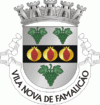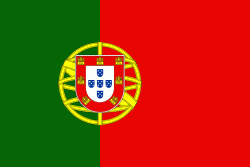Vila Nova de Famalicão (Vila Nova de Famalicão)
 |
 |
Frequently known simply as Famalicão, the city is the south entrance of the Minho province and the last reference of the Minho province for whoever comes from the North of Portugal and the Spanish region of Galicia. Since ancestral times, its privileged location has been a motivation for the passage and fixation of other people who left marks of their ways and culture in the territory, still easily found nowadays. The municipality is bordered by Braga to the north, by Guimarães to the east, by Santo Tirso and Trofa to the south, by Vila do Conde and Póvoa de Varzim to the west and by Barcelos to the northwest. Due to its privileged location, Famalicão is currently served by a network of modern roads, with one of the most important motorway junctions of the country – A3 (Porto – Vigo) and A7 (Guimarães – Póvoa de Varzim), as well as a train service with direct connections to Braga, Guimarães, Porto, Vigo, Coimbra, Lisbon and Algarve.
Because of this strategic positioning, Famalicão is today mentioned as one of the main cultural, commercial and industrial centres of the country. The strength of its diverse industry and socio-economic dynamics are prominent features at national and international level. Vila Nova de Famalicão hosts the headquarters of some of the largest and best companies in the country in various industry sectors, with its maximum strength in the textile and clothing, automotive, agrofood and metal-mechanics sectors, giving it the 3rd place in the most exporting municipalities of the country and one of the major industrial economies in the North.
Land of the writer Camilo Castelo Branco, whose house-museum is part of a network of 13 museums, which includes the Portuguese Centre of Surrealism, the National Railway Museum – Lousado Museum Centre, and the Textile Industry Museum – Ave Basin.
The historical remains on the origin of the settlement of this land, takes us to the Iron Age, more properly to archaeological remains of hillforts throughout the county.
Castro do Monte das Ermidas, perhaps founded in the 4th century BC, Castro de São Miguel-o-Anjo or Castro de Eiras, are some of the archaeological remains of remote settlements that the county has. The Pedra Formosa do Castro de Eiras, which belonged to a bathing complex, was discovered in 1880 and, according to archaeologists, it dates from the first millennium before Christ.
Map - Vila Nova de Famalicão (Vila Nova de Famalicão)
Map
Country - Portugal
 |
 |
| Flag of Portugal | |
One of the oldest countries in Europe, its territory has been continuously settled, invaded and fought over since prehistoric times. The territory was first inhabited by pre-Roman and Celtic peoples who had contact with Phoenicians, ancient Greeks and Carthaginians. It was later ruled by the Romans, followed by the invasions of Germanic peoples and the Islamic invasion by the Moors, whose rule was eventually expelled during the Reconquista. Founded first as a county of the Kingdom of León in 868, gained its independence as the Kingdom of Portugal with the Treaty of Zamora in 1143.
Currency / Language
| ISO | Currency | Symbol | Significant figures |
|---|---|---|---|
| EUR | Euro | € | 2 |
| ISO | Language |
|---|---|
| PT | Portuguese language |
















